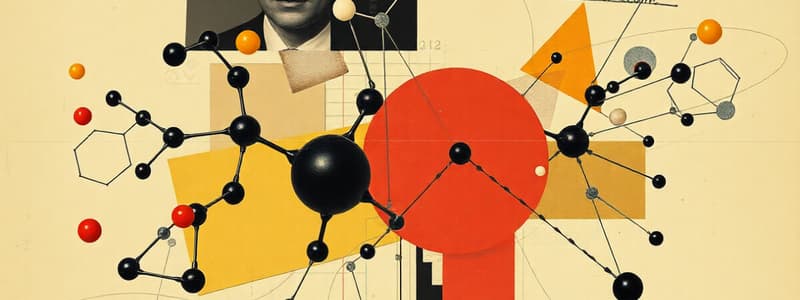Podcast
Questions and Answers
Which structure is characteristic of monosaccharides?
Which structure is characteristic of monosaccharides?
- Multiple rings joined together
- Single chain or single ring structure (correct)
- Complex branched structure
- Double ring structure
What distinguishes a disaccharide from a monosaccharide?
What distinguishes a disaccharide from a monosaccharide?
- Disaccharides are insoluble in water
- Disaccharides are formed by dehydration synthesis of two monosaccharides (correct)
- Disaccharides are composed of multiple rings
- Disaccharides serve primarily for energy storage
Which of the following is a storage carbohydrate in animals?
Which of the following is a storage carbohydrate in animals?
- Glycogen (correct)
- Starch
- Cellulose
- Fructose
What is the primary function of triglycerides in the body?
What is the primary function of triglycerides in the body?
Which lipid is the chief material for building cell membranes?
Which lipid is the chief material for building cell membranes?
What is a key characteristic of polysaccharides?
What is a key characteristic of polysaccharides?
Which type of lipid is primarily responsible for insulation and energy storage?
Which type of lipid is primarily responsible for insulation and energy storage?
What differentiates triglycerides from phospholipids?
What differentiates triglycerides from phospholipids?
Which carbohydrate serves as the main storage form in plants?
Which carbohydrate serves as the main storage form in plants?
What is the structural characteristic of steroids?
What is the structural characteristic of steroids?
Flashcards
Carbohydrates
Carbohydrates
A type of organic molecule that serves as an easily accessible energy source for the body. They are composed of carbon, hydrogen, and oxygen in a ratio of approximately 1:2:1.
Monosaccharide
Monosaccharide
The simplest form of carbohydrate. It is a single chain or ring structure, with the most important ones being pentose (5 carbons) and hexose (6 carbons).
Disaccharide
Disaccharide
A carbohydrate formed when two monosaccharides are joined together through a process called dehydration synthesis.
Polysaccharide
Polysaccharide
Signup and view all the flashcards
Lipids
Lipids
Signup and view all the flashcards
Dehydration Synthesis
Dehydration Synthesis
Signup and view all the flashcards
Pentose sugar
Pentose sugar
Signup and view all the flashcards
Hexose Sugar
Hexose Sugar
Signup and view all the flashcards
Glycerol
Glycerol
Signup and view all the flashcards
What are the main functions of lipids?
What are the main functions of lipids?
Signup and view all the flashcards
Study Notes
Organic Molecules
- Organic molecules are the molecules of life.
- Carbohydrates are a readily available energy source for the body.
- Their general structure is Carbon : 2 * Hydrogen : Oxygen.
- Monosaccharides are single-chain or single-ring structures.
- Pentose (5 carbon) and hexose (6 carbon) sugars are crucial for the body.
- Disaccharides form when two monosaccharides join through dehydration synthesis.
- Polysaccharides are large, insoluble molecules, ideal for storage.
- Starch is the storage carbohydrate formed by plants.
- Glycogen is the storage carbohydrate of animal tissues.
Lipids
- Lipids insulate body organs, create cell membranes, and provide stored energy.
- Triglycerides are neutral molecules consisting of one glycerol and three fatty acids, serving as an energy storage molecule.
- They are primarily found beneath the skin.
- Phospholipids are modified triglycerides, having two fatty acid chains with a phosphorus-containing group, the primary component in cell membrane structure.
- Steroids are flat molecules composed of four interconnected hydrocarbon rings.
Studying That Suits You
Use AI to generate personalized quizzes and flashcards to suit your learning preferences.




